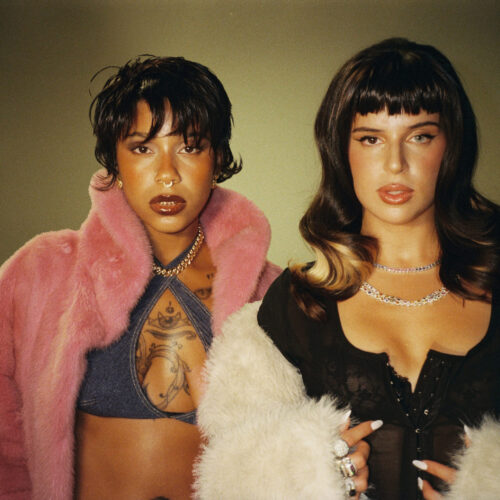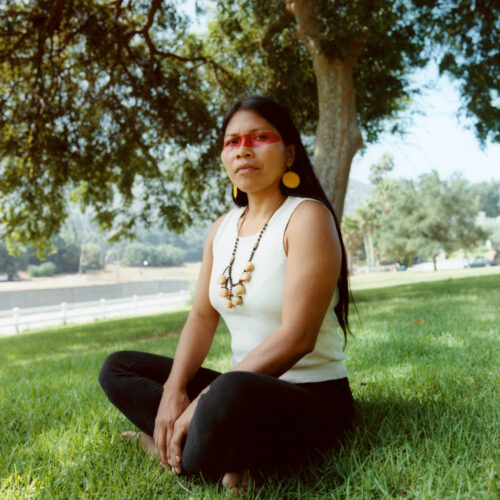Brooklyn-based, Colombian duo Salt Cathedral connected with Alissa Lopez Serfozo to discuss the subterranean cave cathedral that inspired their name, the dream-like Carribean sounds of Brooklyn, music that makes you dance and feel good, and their belief that Colombians share a deeply rooted cultural resilience. Speaking from their home in Bed-Stuy, Brooklyn, Juli and Nico give us a window into their musical production, Colombian identity, and collaborative partnership, while also exploring connections with contemporary Latinx creativity.
Uno. Previously known as Il Abanico, Juli and Nico reincarnated their creative partnership under a new name: Salt Cathedral. While touring under a Spanish name in the United States, they struggled with brand recognition. As Juli describes, “We decided to change our name to something in English so people could remember and pronounce it.” Nevertheless, they wanted to maintain a connection to the place they are from. Inspired by the Salt Cathedral of Zipaquirá, an underground Roman Catholic church built near Bogotá, they took on a newly inspired name. For Juli, the historic Salt Cathedral is both grand and magical, while also associated with work — Catholic laborers who worked inside the dangerous 200 meter tunnels of the active salt mine of Zipaquirá created shrines to the Virgin Mary that were converted into a single cathedral.
Dos. Salt Cathedral’s discography has lyrically evolved and manifests their hybrid cultural experiences. Whereas a majority of their songs were once crafted in English, the duo now flows expertly between Spanish and English and devises some songs exclusively in Spanish. Moreover, by establishing roots in Bed-Stuy, Brooklyn, Juli and Nico have simultaneously taken inspiration from their new neighborhood and the various cultures that shape it. As Nico describes, their neighborhood emanates a real joy that is reflected in the musical landscape of the streets, where one readily hears house music, dancehall sounds, salsa beats, and jazz patterns. Not only does the history of the city and its music scene shape their musical scope, but as Juli mentions, “We absorb music through the people.” For this duo, intercultural exchange is rooted in their community-based musical journey.
Tres. The ethereal sound of Salt Cathedral’s music is a culmination of their need to feel good. Growing up in a dance culture steeped in old-school reggaeton, merengue, and salsa music, Nico and Juli naturally incorporate Carribean and Afro-Latinx dance sounds into their music: funky drums and cumbia beats often interplay with techno and house synths and breathy vocals. Sometimes their music sounds like a summertime outdoor park picnic with a sexy and kind lover. Other songs evoke an under the radar twerkeo party on a rooftop in Brooklyn. They hope their music is not only electrifying for their audiences, but also gets people ready to dance over and over again in different scenes and moods.
Cuatro. Resilience is in Juli and Nico’s DNA. Sharing their theory that creative-making is an antidote to trial and tribulation, Nico explains that they both grew up during the unsafe and insecure era of Bogotá in the ‘90s and 2000s. Nevertheless, they remark that Colombian music at that time was generally very happy and that music served as a natural outlet for joy. As Nico elaborates, “Even if things are shit, music gives that boost of energy that demonstrates you can be happy even during dark times.” They believe that Colombians are an intrinsically resilient people that always find a way ahead – un país lleno de gente echada pa’delante. In turn, Salt Cathedral’s music juxtaposes gloss with dance beats, mournful keys with celebratory rhythms, and makes you want to get up and move, even while mourning a recent heartbreak.









